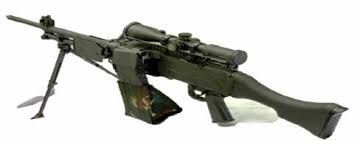Sales of arms and military services by the 100 largest Arms Producing Companies in the world totalled $597 billion in 2022, as per a report by Swedish think-tank Stockholm International Peace Research Institute (SIPRI).
Further, Indian Defence Public Sector Units (DPSUs) Hindustan Aeronautics (HAL), Bharat Electronics (BEL) and Mazagon Docks (MDL) figure in the list of the top 100 arms-producing companies, which was dominated by US and Chinese companies.
HAL was ranked 41st with $3.4 billion in arms sales, BEL 63rd with $1.9 billion and MDL 89th with $1 billion.
Noteworthy, all the major orders placed to these three DPSUs have been mainly by the 14-lakh strong Indian armed forces.
But the three together accounted for just a paltry 1% of the $597 billion global arms sales last year.
Their revenues will, of course, register a jump in the near future.
The defence ministry just last week gave preliminary approval for orders worth Rs 1.8 lakh crore (around $22 billion) for HAL, which includes 97 more Tejas Mark-1A fighters and 156 Prachand helicopters as well as upgrade of 84 Russian-origin Sukhoi-30MKI fighters.
SIPRI said though the demand for arms rose sharply around the world in 2022, revenues of the 100 largest companies were 3.5% less than 2021in real terms due to the actual production lagging behind.
Despite receiving new orders, many US and European arms companies could not significantly ramp up production capacity because of labour shortages, soaring costs and supply chain disruptions that were exacerbated by the war in Ukraine.
In addition, countries placed new orders late in the year and the time lag between orders and production meant that the surge in demand was not reflected in these companies’ 2022 revenues.
The US continues to overwhelmingly dominate the Top-100 list, despite revenues of its 42 companies falling by 7.9% to $302 billion in 2022.
Its top five companies are Lockheed Martin ($59 billion arms sales), Raytheon ($40 billion), Northrop Grumman ($32 billion), Boeing ($29 billion) and General Dynamics ($28 billion).
The revenues of arms companies in other parts of the world, like Asia and the Middle East, however, grew significantly.
Domestic demand and reliance on local suppliers shielded Asian arms companies from the supply chain disruptions.
Rather, companies in China, India, Japan and Taiwan all benefited from sustained government investment in military modernization.
China has eight companies in the Top-100 with total arms sales of $108 billion, accounting for the second largest share as a country in the list at 18%.





